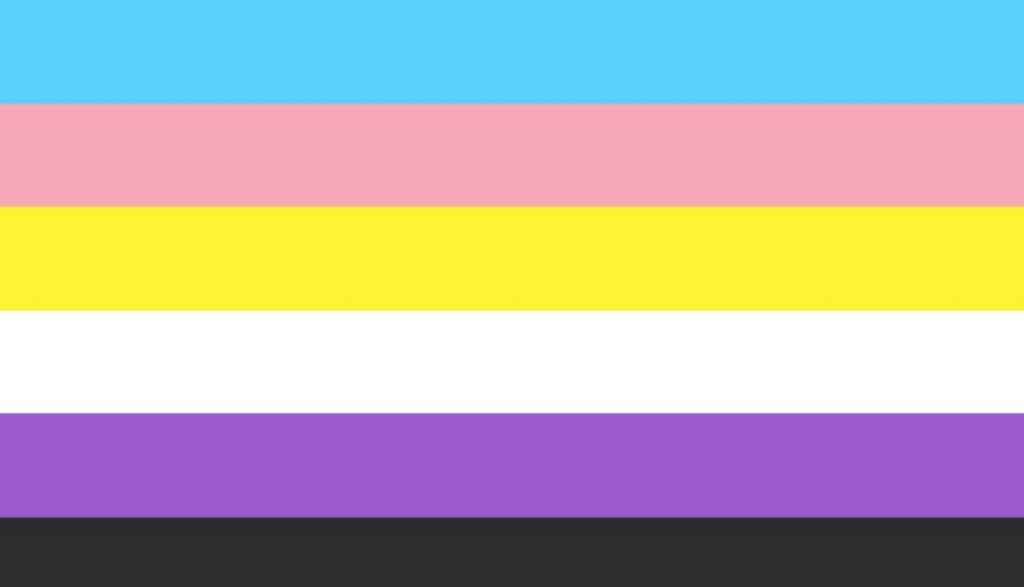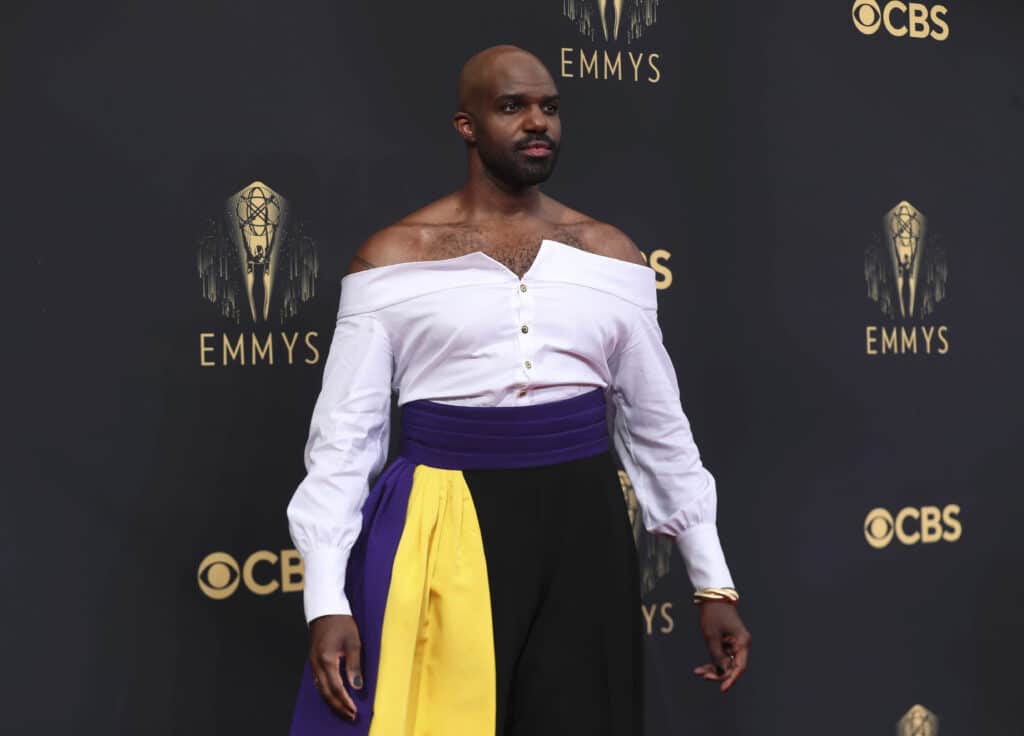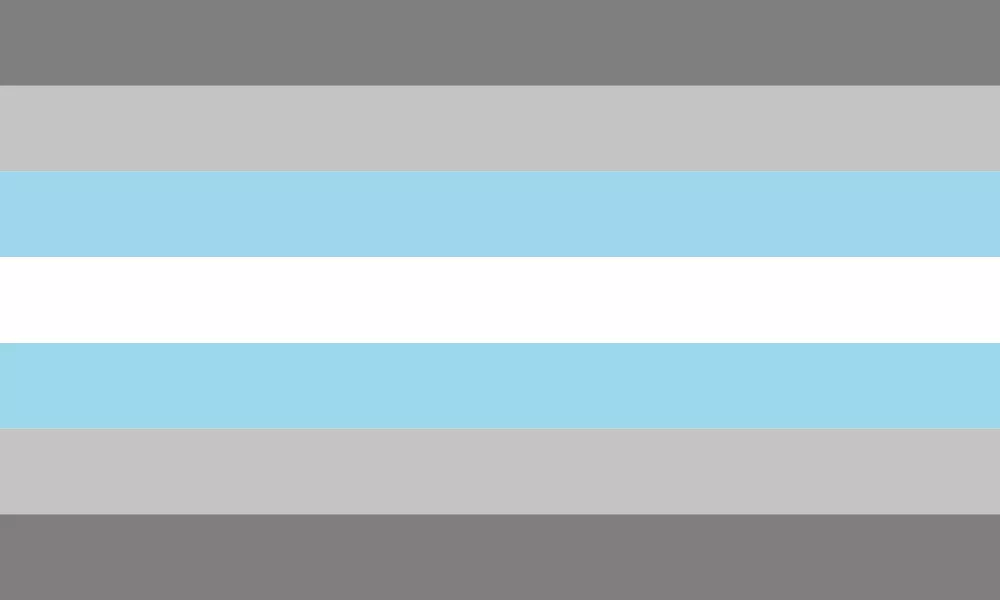In a world that continues to grow and change to be more inclusive and accepting of different gender identities, the non-binary flag has surfaced as a powerful symbol of outlook and recognition for people whose identities don’t fit into the traditional binary concept of male and female.
This lively and meaningful flag stands at the front position of a growing movement to tackle and reshape the way society sees gender, supporting a more inclusive and just world for all. The non-binary flag, with its unique colour pattern, brings a rich history with it and a hidden message about identity, respect, and self-expression.

In this article, we’ll go into the start of the non-binary flag, look at the impacts of its colours, and observe the wider social and cultural effects of adopting it. By understanding the history of the flag and its symbolism, we can better appreciate the present fight for gender equality and the importance of accepting and supporting non-binary people.
Read Also: Who Is the Most Hated Host on QVC? See Our Top 15
What is the Non-Binary Flag?
The non-binary flag is a symbol that stands for people who call themselves non-binary, which means that they don’t associate their gender identity with the traditional groups of male or female.
The flag consists of a palette of four flat stripes. Each of the stripes has a specific colour standing in for different parts of non-binary identity. They intended to create a visible and inclusive symbol with the non-binary flag for non-binary individuals.

This helps them feel seen and known in a world that underlines the binary gender model almost all the time. It also functions as a tool for raising awareness about non-binary looks and asking for their rights and equal treatment.
Like other pride flags, such as the rainbow flag for the LGBTQ+ community, the non-binary flag plays a crucial role in fostering understanding, acceptance, and support for individuals who do not fit into the traditional gender binary. It is a powerful symbol of solidarity, unity, and the ongoing fight for gender equality and inclusivity.
Related: Nicaragua Flag: Meaning, History & Colours
Non-Binary Flag Colours
The non-binary flag has four straight stripes, each of these stripes has its specific colour, and each colour conveys its meaning concerning non-binary identity. Here is the meaning of the colours of the non-binary flag:

- Yellow Stripe: The number one stripe of the non-binary flag is yellow. Yellow stands for genders that live outside of the normal binary idea of male and female. It stands for gender identities that are neither solely male nor female and may go beyond some identities.
- Such as genderqueer, genderfluid, or other identities that are non-binary. Yellow is connected with the idea of accepting diversity and flexibility in expressing gender.
- White Stripe: The second stripe from the top is white. White stands for those who see themselves as agender or gender-neutral. Agender people do not identify with any gender, and they sometimes see themselves as genderless or lacking normal gender characteristics.
- The white stripe stands for neutrality, a lack of gender, and the refusal of the binary system.
- Purple Stripe: The middle stripe is purple. Purple is a colour with historical significance in the LGBTQ+ community and the context of the non-binary flag. It represents individuals who identify as a mix of both male and female genders or as a combination of various genders beyond the binary.
- This colour symbolizes the diversity and inclusivity of gender identities and serves as a reminder that gender is not limited to a strict binary framework.
- Black Stripe: The bottom stripe of the flag is black. Black represents those who identify with genders that are entirely outside the traditional binary of male and female. It symbolizes the experiences of non-binary individuals who may face discrimination, prejudice, or a lack of understanding due to their gender identity.
- The black stripe represents the struggles and challenges that non-binary individuals often encounter and underscores the importance of acknowledging and supporting their identities.
Together, these four colours in the non-binary flag create a powerful symbol of non-binary identity, diversity, and inclusion. The flag promotes awareness and recognition of gender identities that transcend the binary while also highlighting the need for acceptance, respect, and equality for all individuals, regardless of their gender identity.
Is there a Demi Boy Flag?

There isn’t a widely recognized or established flag specifically for demi-boys. Demi-boys are individuals who partially, but not fully, identify as male. Their gender identity is often a mix of males and other genders.
While the concept of a demi-boy identity is recognized and respected, it hasn’t been associated with a universally accepted flag in the same way that some other gender identities have corresponding pride flags.
It’s important to note that the creation of new pride flags and symbols is an evolving process within the LGBTQ+ community, and new flags may emerge over time to represent specific gender identities if there has been any development or adoption of a demi-boy flag.
We recommend checking current LGBTQ+ resources and communities to confirm the latest information on this topic. Pride flags often emerge through community discussions and collaborations to represent and celebrate diverse gender identities.
What is the Omnisexual Flag?

The omnisexual flag is a distinctive symbol that holds deep significance for individuals who identify as omnisexual. Omnisexuality is a term used to describe individuals who experience attraction to people of all genders and sexes but with a unique emphasis on recognizing and valuing the differences that exist between these diverse gender identities.
It’s important to distinguish omnisexuality from pansexuality, which is another sexual orientation. Pansexuality refers to the capacity to be attracted to people regardless of their gender or sex, emphasizing a gender-blind approach to attraction.
The omnisexual flag was introduced to the LGBTQ+ community by a Tumblr user named @pastelmemer in the year 2015. Although the creator did not explicitly explain the choice of colours, the flag has had different interpretations and meanings within the omnisexual community.
Some of the most commonly accepted interpretations are as follows:
- The presence of light pink and light blue stripes on the flag is symbolic of the gender spectrum. These colours represent the attraction to femininity and women (represented by the light pink stripe) and masculinity and men (represented by the light blue stripe).
- The pink and blue stripes, in addition to symbolizing gender-specific attractions, also signify attraction to individuals who identify as female (pink stripe) and male (blue stripe).
- The purple stripe within the flag carries a distinct significance. It is a representation of attraction to non-binary individuals who do not identify as either male or female. The colour purple conveys a recognition and embrace of those who exist outside the traditional binary gender system.
The omnisexual flag serves as a source of pride and identity for omnisexual individuals, fostering a sense of community and visibility within the LGBTQ+ spectrum. It reflects the complex and diverse nature of human attraction and affirms the value of respecting and celebrating these distinctions within the context of sexual orientation.
See Also: Haunting Adeline: Find Out Everything About “The Series”
Conclusion
The non-binary flag functions as a lively sign of diversity, inclusion, and freedom for people whose gender identity goes beyond the normal binary context. With its one-of-a-kind colours and rich symbolism, it serves as a visible depiction of the difficult and all-around nature of gender.
The yellow flag, white, purple, and black stripes all together carry the message of accepting a wide scale of gender identities, including those who see themselves as a mix of genders, gender-neutral, or outside the binary altogether.
Aside from being just a colourful banner, the non-binary flag is a facilitator for awareness, understanding, and acceptance. It promotes discussions about the flexibility and diversity of gender, adopts unity among non-binary people, and sends a strong message of support and respect to those who may have felt different or misunderstood.
As society continues to grow in its journey to greater inclusivity, the non-binary flag plays an important role in backing the rights and outlook of non-binary persons. By seeing and accepting this symbol, we take a closer step toward a world where everybody’s gender identity is known and valued.
FAQs for Non-Binary Flag
What does the 🌈 mean in your bio?
The Rainbow Flag emoji is used both by people who self-identify as LGBTQ as well as by their allies.
What is the nonbinary ace flag?
The NB “enby” flag consists of yellow, white, purple, and black for the various possible gender/ungendered roles. The Ace flag represents the spectrum of asexuality shades of grey and community in purple.
What is the asexual Graysexual flag?
A black, grey, white, and purple flag is commonly used to display pride in the asexual community.
